.

The Best Types of Pots For Growing Weed
Not all growing containers are equal. Some types of containers are better suited for some purposes than others. Likewise, growing pots don’t just differ in size. You can find containers from the classic flower pot to advanced smart pots or specialty containers for hydro systems. Learn what you need to know about growing containers for weed.
Contents:
When growing cannabis, there are many factors to consider to achieve the best yield possible, including pot selection. Growers have plenty of different containers to choose from. The most popular pot types include:
- Terracotta pots
- Plastic pots
- Grow Bags
- Air Pots
Each of these pots comes with its own advantages and drawbacks.
As well as the type of pot, you’ll also need to consider what size of pot to use. Autoflower seeds are best sown directly into 11L pots, where they can remain for the entire growing cycle. Photoperiod seeds are often started in cell trays or small pots, and growers gradually transplant them into progressively larger pots as they grow.
What Kind of Pots Are Best for Growing Weed?
There is no one-size-fits-all approach when it comes to selecting a pot to grow weed in.
Walk into any garden center or hydroponics store, and you’ll come across a diverse selection of growing containers, from traditional terracotta pots to more modern plastic ones. You’ll also encounter those made of fabric.
Terracotta Pot
The trusty standard flower pot has served home growers well for generations. The terracotta flower pot, invented as far back in time as 575 BC[1], has assisted in the cultivation of flowers, herbs, and vegetable crops for thousands of years. While ancient, terracotta pots are far from outdated. Countless gardeners still value them for their resilience, aesthetics, and functionality.
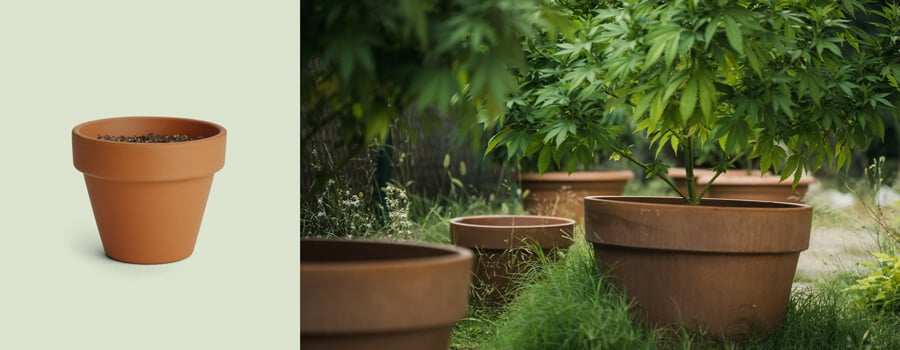
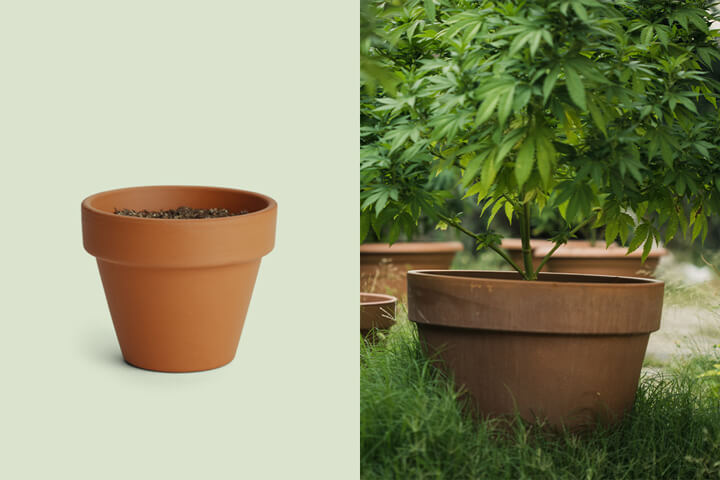
| Pros |
|
| Cons |
|
| Pros |
|
| Cons |
|
Plastic Pot
The patent for plastic flower pots, secured in 1961, created a cheaper alternative to terracotta containers that are far more durable. So, what attracts some growers to using standard flower pots when growing weed? And what turns others off?
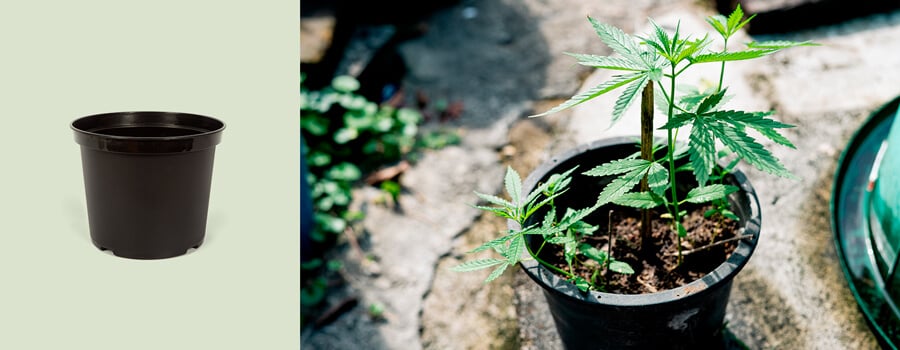
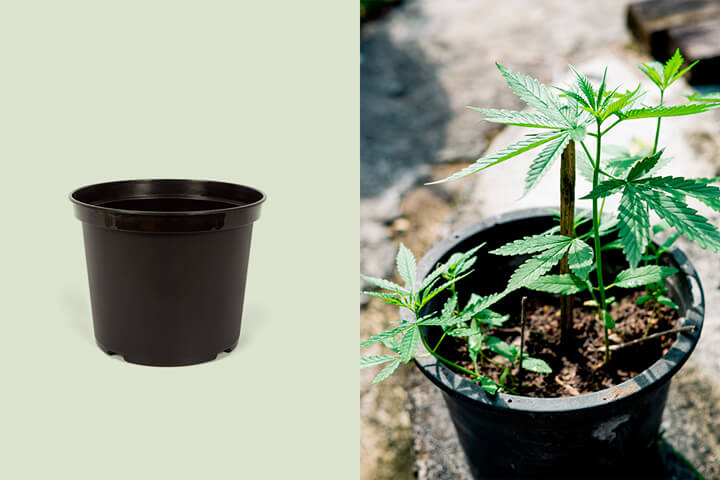
| Pros |
|
| Cons |
|
| Pros |
|
| Cons |
|
Grow Bags
Grow bags, also known as fabric pots, came onto the commercial scene 16 years after the patenting of plastic pots. Invented by Oklahoman tree farmer Ralph Reiger in 1980, grow bags swap out terracotta and plastic for durable fabric that increases air exchange and drainage. Reiger developed the idea to improve the efficiency of growing and harvesting trees, but cannabis growers soon caught wind of their impressive benefits. Many home gardeners also use them when growing a variety of crops, from potatoes to tomatoes. To find out if smart pots are the right choice for you, you’ll need to weigh up their advantages and disadvantages.
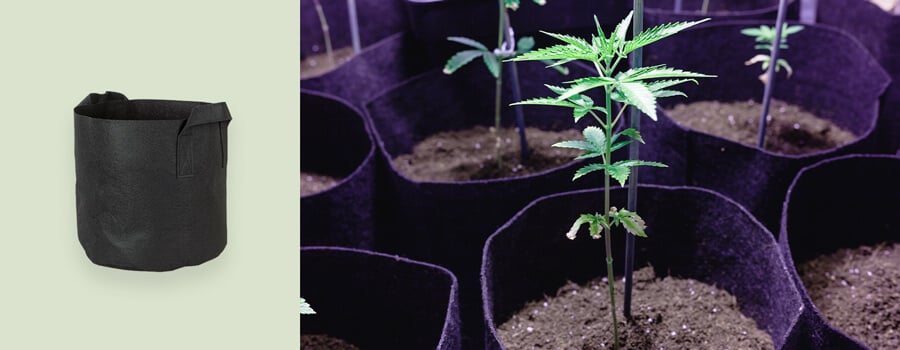
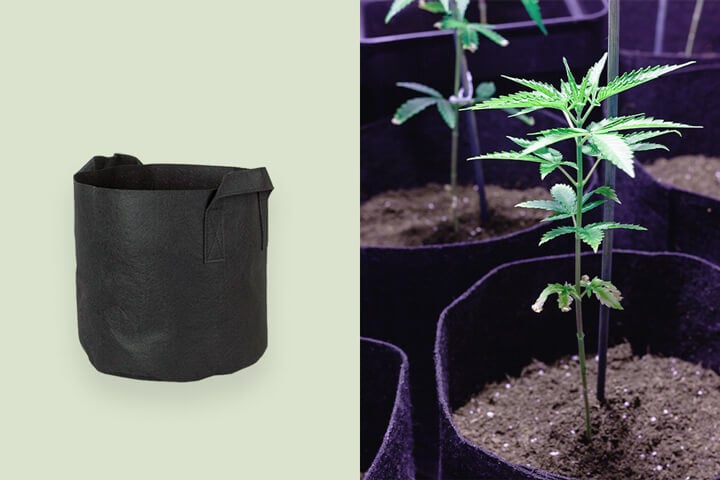
| Pros |
|
| Cons |
|
| Pros |
|
| Cons |
|
RQS Grow Bag with Aqua-Breathe Layer
Innovation eventually takes hold of a design and improves its features, creating something much more functional than the original invention. At Royal Queen Seeds, we’ve achieved just that regarding grow bags. We saw great value in the original design but also identified areas for improvement. By incorporating an Aqua Breathe geotextile layer, we essentially enhanced the durability and porosity of the smart pot. The additional non-woven layer adds robustness to our pots while balancing adequate drainage with optimal water retention. Discover the benefits and drawbacks of this newer design below:
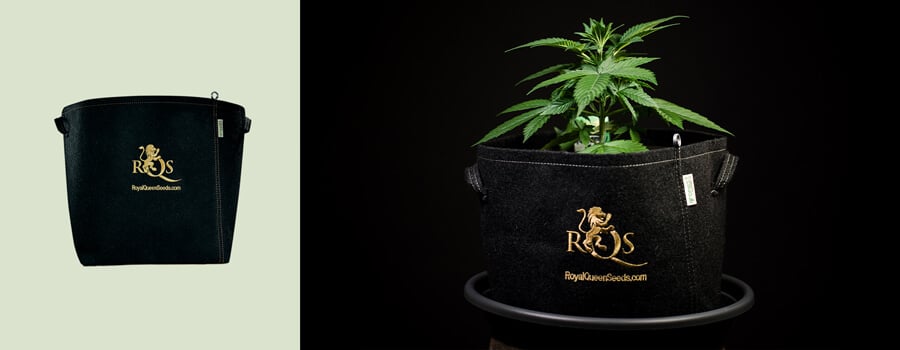
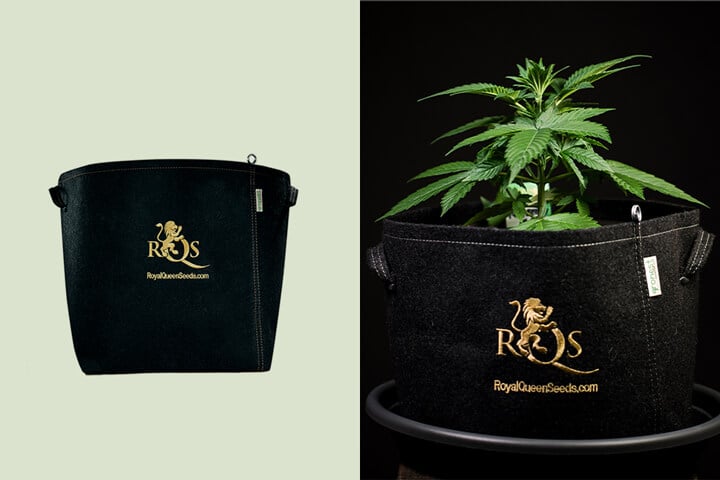
| Pros |
|
| Cons |
|
| Pros |
|
| Cons |
|
Air Pots
Designed by Canadian company RootMaker Products in the 1990s, Air Pots are one of the most recent pot designs in the world of horticulture. These are physically distinct from other pots in that a series of spikes cover their exterior, with the tip of each spike featuring a hole that allows for superb air exchange. In many ways, Air Pots are a hybrid of standard plastic flower pots and grow bags; they’re made of durable plastic but also come with the benefits of air pruning and superior drainage. Weigh up the pros and cons of Air Pots below to see if they can work for you.
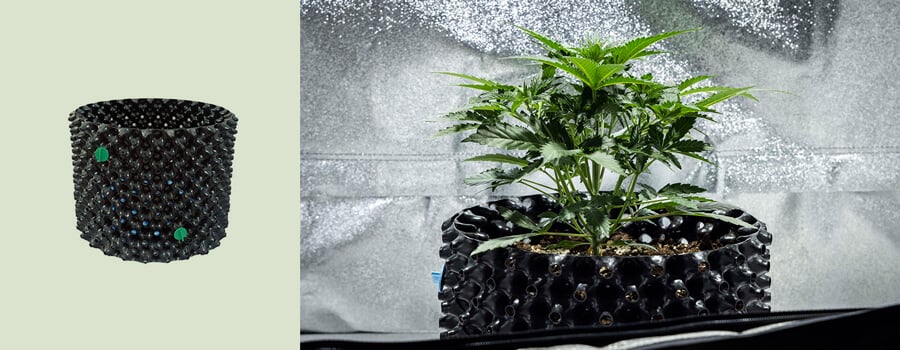
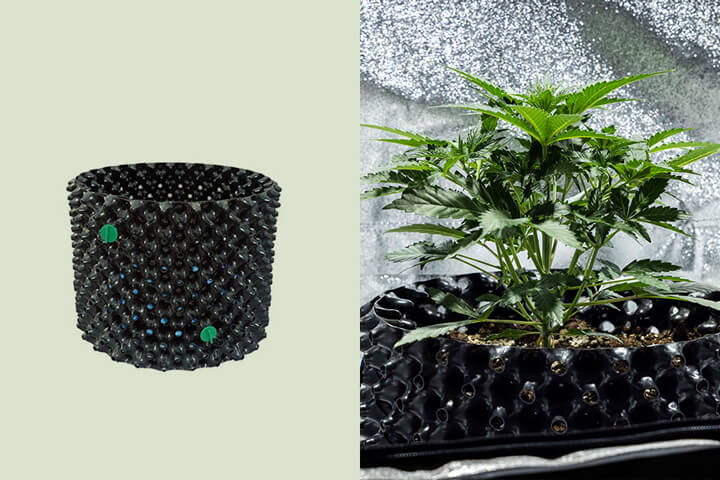
| Pros |
|
| Cons |
|
| Pros |
|
| Cons |
|
Cannabis Grow Bag
Cannabis grow bags are essentially smart pots with several design adjustments that are marketed specifically towards cannabis cultivators. Good-quality grow bags are made of tough fabric that will last across many growing cycles. Built with resilience in mind, many of them also possess large handles that make them easy to move around, from under the open sky to the protection of a greenhouse or polytunnel. Grow bags have also become popular in the world of edible gardening, especially in the cultivation of potatoes. Check out a balanced breakdown of these growing containers below.
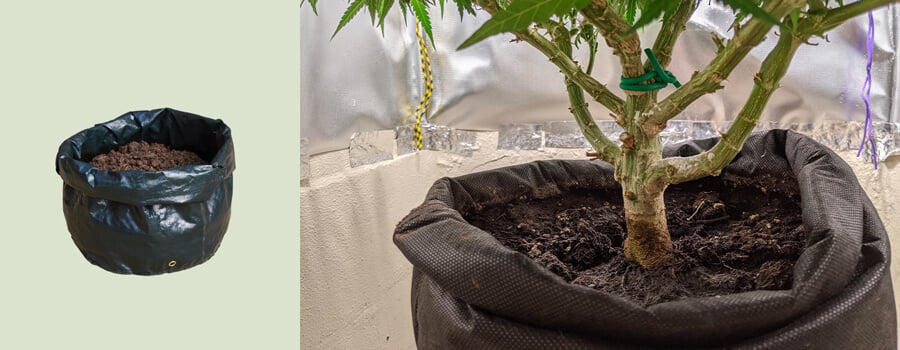
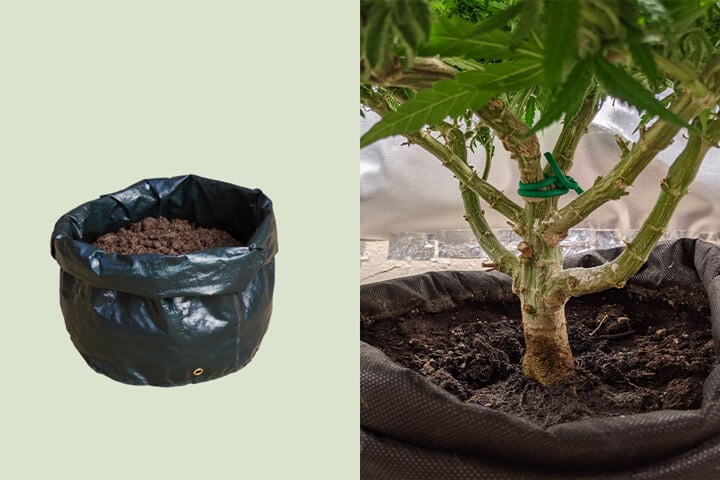
| Pros |
|
| Cons |
|
| Pros |
|
| Cons |
|
Hempy Buckets
The hempy bucket hydroponic system uses plastic buckets, typically of 5-gallon capacity. Growers make a hole in the bottom of the bucket and place it on a collection tray. The buckets are filled with a water-retentive medium such as perlite, into which seedlings are transplanted. Growers then manually water the medium with a nutrient solution which settles in the tray. The growing medium wicks water and nutrients up from the reservoir below, feeding and hydrating plants. While different to soil growing techniques, the plastic buckets used in this system aren’t dissimilar to standard plastic flower pots.
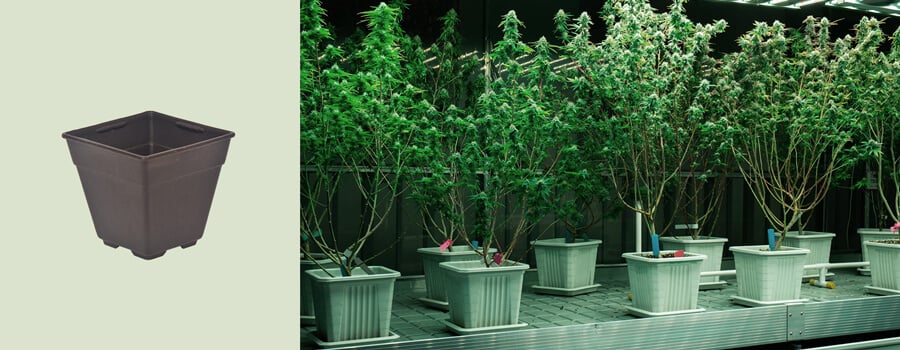
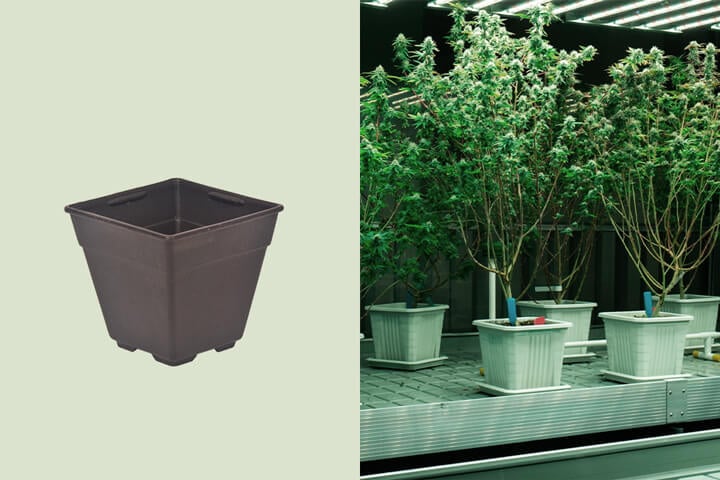
| Pros |
|
| Cons |
|
| Pros |
|
| Cons |
|
The Best Ways to Catch Water Runoff
Thankfully, there are several options available when it comes to capturing and removing excess water from a growing space without causing a minor flooding event. Check out two of the most common options below to control water runoff. Once harvested, you can use this water in several ways, such as using it to water again in the future or using it to water your compost bin or pile.
-
Saucers
Saucers are a common way to manage water runoff when growing potted plants. Dish-shaped, they slow directly underneath a pot where they prevent water from flowing wildly onto the floor or windowsill. If you choose to utilise this option, you’ll need to select a saucer compatible with the size of your pot. Grab one too small, and water will pour down the sides, defeating the purpose of using a saucer in the first place. Saucers are particularly useful for collecting water runoff when growing in Air Pots, as water quickly drains out of the bottom.
-
Trays
Sometimes, saucers simply can’t handle the amount of water runoff from large containers. In this instance, trays are a good backup plan. Growing trays always exceed the footprint of the growing container. Their increased size means they’ll have no problem collecting water from larger containers. Some grow tray models are large enough to cover most of the floor space in a small grow tent, allowing growers to use one tray to collect runoff from several plants at once.
What Size Container Is Best for Growing Weed?
The size of the container solely depends on the goal of the grower during a particular cultivation cycle. When aiming to grow huge plants, you’ll need a large container; if you’re aiming for small and stealthy specimens, you’ll only need a small pot. Different genetics and pot sizes also go hand-in-hand, with photoperiod strains almost always needing bigger pots than autoflowers to reach their genetic potential. Check out the ideal pot sizes for cannabis seedlings and autoflowering genetics below.
Check out these figures to explore typical pot sizes during photoperiod growing cycles:
- Seedling and early vegetative phase: 0.5–7.5l pot
- Mid vegetative to flowering phase: 11–25l pot (or even bigger)
-
Pots Size for Seedlings
Photoperiod cannabis seeds are often started outside of their final growing container using a process of potting up until they’re big enough for their last pot. Some growers choose to start seeds in cell trays before transplanting seedlings into larger containers. However, you’ll need to time things right here to avoid your seedlings becoming root-bound in the early stages. An easy alternative, a 1l plastic pot serves as a great home for a photoperiod seedling while reducing the odds of circular root growth. Sow seeds directly into these containers, transplanting them to a larger pot, such as a 5L container, once their small canopy grows past the circumference of the pot.
-
Pot Size for Autoflowers
Because autoflowering plants grow so fast, and cultivators can’t control when they flower, growers tend to avoid transplanting them. This procedure can stress them and slow down growth, leaving them very little time to bounce back. When it comes to autos, sow seeds directly into an 11l pot and leave them there for the entire growing cycle for consistent and productive growth.
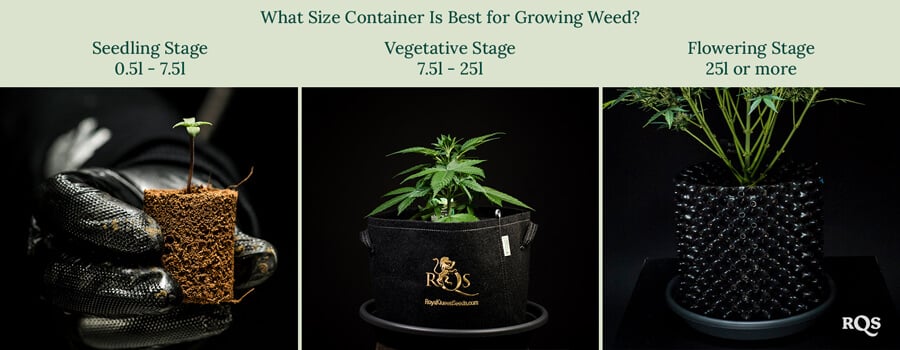
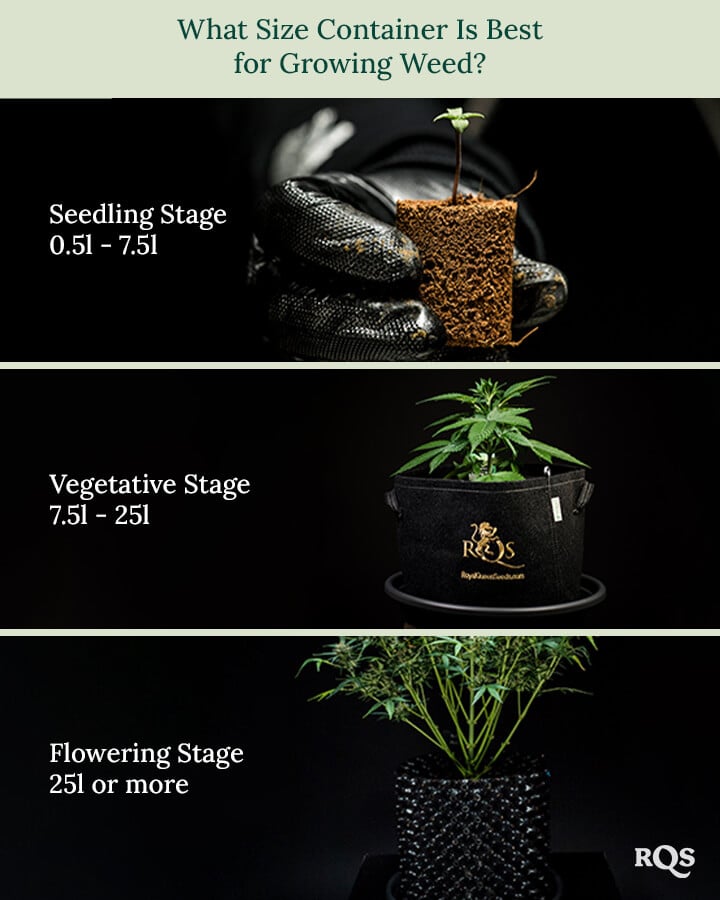
Do You Need Pots for Outdoor Cannabis Plants?
When cultivating cannabis outdoors, you aren’t limited to growing plants in pots. Transplanting seedlings into raised beds or directly into the ground provides roots with more space to grow and develop, resulting in larger and sometimes more productive plants that require less frequent watering. However, pots offer the key advantage of being able to move your plants around. This comes in handy during bad weather, especially towards the end of the growing season when flowers are prone to mold. Moving them into a greenhouse or indoors could save your yield.
What are the Best Mediums for Growing Weed?
There are a range of different growing medium options when setting out to grow weed. Most of the pot types above are most suited to using soil. However, the simple word “soil”, in reality, encompasses many unique mixes. For the best results, we recommend enriching a standard potting mix with mature compost, worming castings, and other forms of organic nutrients, such as seaweed and bat guano. This will create a deposit of slow-release fertilisers that keep plants going throughout the growing season. The addition of bioinoculants, such as trichoderma and mycorrhizal fungi, will kickstart the process of nutrient cycling and decrease the amount of time it takes for these nutrients to end up in your plants.
Give Your Cannabis Plants the Best Start in Life
You can give your cannabis plants the best possible start in life by carefully considering weed pot selection. Your local climate and the genetics you choose to grow will dictate which pot you choose more than anything else. Plastic standard flower pots are ideal for warmer regions where they limit evaporation. In contrast, smart pots and air pots are great for cooler places where water-logging can become an issue. While photoperiod strains benefit from much larger pots, autos do great when sown directly into a pot size of 11l. Consider the unique features of all of the pots mentioned above and decide which works best for your growing goals.
- Visual history of the flower pot, vase and planter – Tortuga Forma https://tortugaforma.co





































